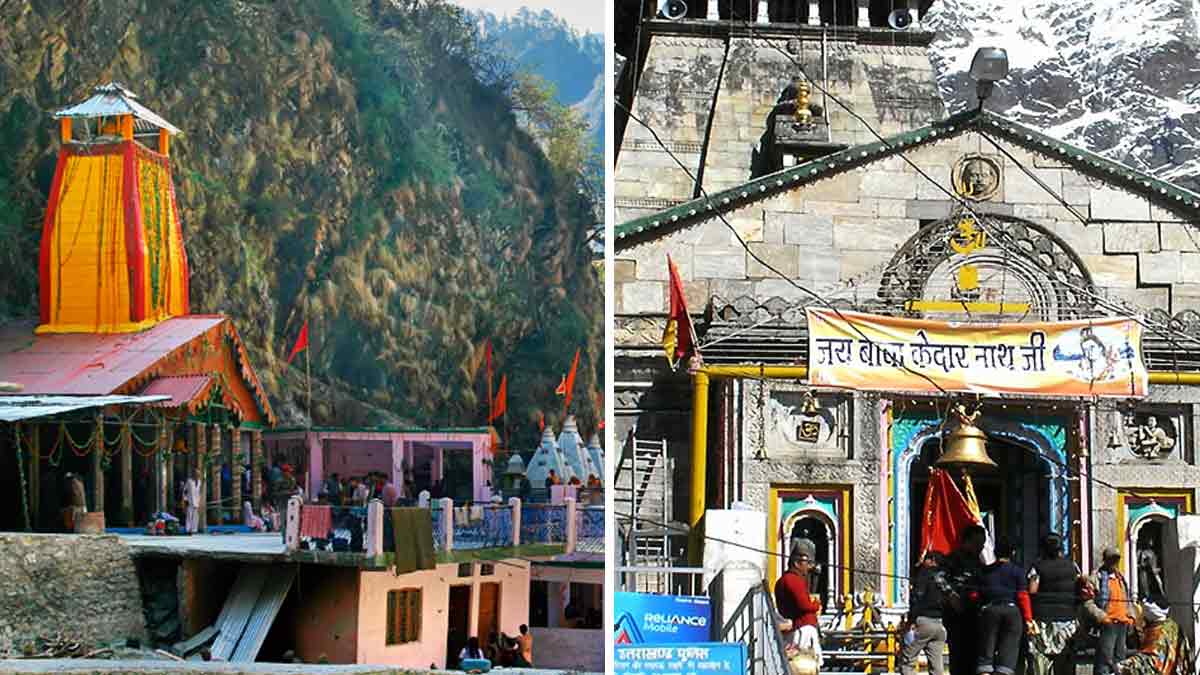
Exploring the 4 Dham of Uttarakhand: A Spiritual Journey to Yamunotri, Gangotri, Kedarnath, and Badrinath
The 4 Dham of Uttarakhand—Yamunotri, Gangotri, Kedarnath, and Badrinath—form one of the most sacred pilgrimages in Hinduism, known as the Chota Char Dham Yatra. Nestled in the majestic Himalayas, these four temples are not only revered spiritual sites but are also set amidst some of the most stunning landscapes in India. Each destination holds deep significance: Yamunotri is dedicated to Goddess Yamuna, Gangotri to the goddess Ganga, Kedarnath to Lord Shiva, and Badrinath to Lord Vishnu. Pilgrims believe that visiting all four dhams cleanses them of sins and leads to Moksha, or liberation from the cycle of life and death.
Whether you’re a spiritual seeker or an adventure enthusiast, the 4 Dham of Uttarakhand offers an unforgettable experience. The journey is a blend of devotion, scenic beauty, and cultural richness, and it attracts millions each year who are drawn by faith, the lure of the Himalayas, and the search for inner peace.
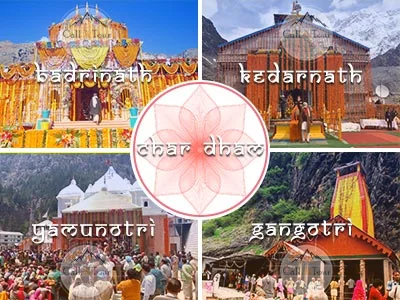
Overview of the 4 Dham of Uttarakhand
The 4 Dham of Uttarakhand, known as the Chota Char Dham Yatra, includes the sacred sites of Yamunotri, Gangotri, Kedarnath, and Badrinath. Nestled in the Himalayan region of Uttarakhand, these temples are not only spiritually significant for Hindus but also draw visitors from around the world for their stunning natural beauty.
Each dham has a unique significance: Yamunotri is dedicated to Goddess Yamuna, where pilgrims visit the source of the Yamuna River. Gangotri is dedicated to Goddess Ganga, symbolizing purity, and is located near the origin of the Ganges River. Kedarnath, dedicated to Lord Shiva, is revered as one of the twelve Jyotirlingas, where Shiva is worshipped as the “Lord of the Field.” Badrinath, dedicated to Lord Vishnu, marks the culmination of the yatra and symbolizes protection and sustenance.
The 4 Dham of Uttarakhand pilgrimage is believed to cleanse the soul, leading to Moksha or liberation. Beyond its spiritual allure, the journey offers breathtaking landscapes, with rivers, glaciers, and towering peaks, making it an ideal destination for both seekers of faith and lovers of nature.
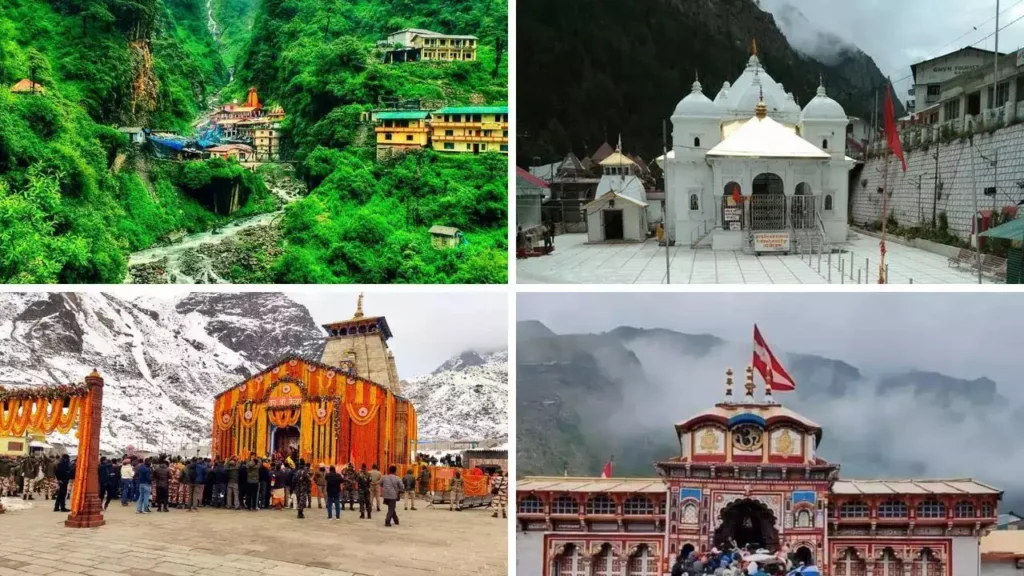
Importance of the Chota Char Dham Yatra
The Chota Char Dham Yatra holds immense religious and cultural importance in Hinduism. This pilgrimage, encompassing the four sacred sites of Yamunotri, Gangotri, Kedarnath, and Badrinath in Uttarakhand, is considered a path to spiritual liberation, or Moksha. Pilgrims believe that visiting these dhams cleanses one’s sins, bringing them closer to the divine and offering a chance to break free from the cycle of birth and death.
Each dham is dedicated to a unique deity and symbolizes different aspects of faith. Yamunotri represents the purity of Goddess Yamuna, while Gangotri is the source of the holy Ganges River, representing purification. Kedarnath, a Jyotirlinga dedicated to Lord Shiva, stands as a place of transformation and forgiveness. Finally, Badrinath, dedicated to Lord Vishnu, symbolizes sustenance and salvation.
The journey, however, is more than religious—it also reconnects pilgrims with nature. Traversing through the rugged Himalayas, glaciers, rivers, and alpine forests, the yatra is both physically challenging and spiritually uplifting. The Chota Char Dham Yatra combines faith, resilience, and the beauty of India’s natural landscapes, making it one of the most cherished pilgrimages in Hinduism.

Yamunotri: The Starting Point of the 4 Dham of Uttarakhand
Yamunotri, the first destination in the 4 Dham of Uttarakhand, is dedicated to Goddess Yamuna. Nestled at an altitude of 3,293 meters, the Yamunotri temple is set amidst serene, mountainous terrain and marks the source of the sacred Yamuna River, which holds immense spiritual significance for Hindu devotees. Pilgrims undertake a scenic 6-kilometer trek from Janki Chatti, a journey filled with waterfalls, dense forests, and breathtaking views of the Himalayas.
The temple complex features hot springs, with Surya Kund being particularly significant. Pilgrims cook rice in the boiling waters as an offering to the goddess, symbolizing purification and blessing. Bathing in the waters of the Yamuna is believed to absolve one of sins and shield them from an untimely death. Yamunotri, with its natural beauty and spiritual aura, provides a tranquil start to the journey of the 4 Dham of Uttarakhand pilgrimage.

Highlights of Yamunotri Temple
- Hot Springs: Near the Yamunotri temple are hot springs called Surya Kund, where pilgrims often cook rice as an offering to the goddess.
- Yamuna River Origin: Yamunotri is the source of the holy Yamuna River, and bathing here is believed to purify devotees of sins.
Best Time to Visit Yamunotri
The Yamunotri temple opens from May to October. The ideal time to visit is between May and June or September to October when the weather is clear.
Gangotri: The Second Dham
Gangotri, the second dham in the 4 Dham of Uttarakhand pilgrimage, is revered as the origin of the holy Ganges River. Located at an altitude of 3,100 meters, Gangotri is dedicated to Goddess Ganga, who is worshipped as a symbol of purity and life. According to Hindu legend, the Ganges descended to Earth through the efforts of King Bhagiratha, who prayed for the river to cleanse his ancestors’ souls. Lord Shiva received her powerful descent, controlling her flow by capturing her in his locks, thus blessing the Earth with her waters.
Pilgrims visiting Gangotri often undertake an additional trek to Gaumukh Glacier, the true source of the river. The temple and surrounding area offer not only a spiritual experience but also spectacular natural beauty, with dense forests, towering peaks, and the mesmerizing sound of the river. Gangotri is a place of divine presence and natural wonder, drawing devotees and nature enthusiasts alike.

Highlights of Gangotri Temple
- Gaumukh Glacier: The Gangotri Glacier, also known as Gaumukh, is the actual source of the Ganges and is accessible by a trek from Gangotri.
- Ganga Aarti: The evening Ganga Aarti performed on the banks of the river is a serene and spiritual experience.
Best Time to Visit Gangotri
The Gangotri temple is open from May to October. The best months to visit are May to June and September to October to avoid heavy rains or snowfall.
Kedarnath: The Third Dham in the 4 Dham of Uttarakhand
Kedarnath, the third dham in the 4 Dham of Uttarakhand, is dedicated to Lord Shiva and holds profound spiritual importance as one of the twelve Jyotirlingas in India. Located at an altitude of 3,583 meters, this ancient temple is set against the majestic backdrop of snow-clad Himalayan peaks and the Mandakini River, creating a mystical and awe-inspiring atmosphere.
According to legend, the Pandavas sought Lord Shiva’s blessings here to absolve their sins after the Mahabharata war. Shiva, initially hiding from them, eventually revealed himself at Kedarnath, where his hump emerged from the ground as a symbol of forgiveness and transformation.
The journey to Kedarnath includes a challenging 18-kilometer trek from Gaurikund, attracting both devotees and adventure seekers. The temple’s resilience, especially during the 2013 floods, has only strengthened its spiritual allure, making Kedarnath a destination of faith, endurance, and divine presence.

Highlights of Kedarnath Temple
- Jyotirlinga Shrine: Kedarnath is one of the twelve Jyotirlingas of Lord Shiva, where he is worshipped in the form of a conical rock.
- Scenic Landscapes: Surrounded by breathtaking snow-capped peaks and the Mandakini River, Kedarnath’s beauty is surreal.
Best Time to Visit Kedarnath
The Kedarnath temple is open from April to November, but the ideal time is between May and June or September and October.
Badrinath: The Final Dham
Badrinath, the final dham in the 4 Dham of Uttarakhand pilgrimage, is dedicated to Lord Vishnu and symbolizes salvation and sustenance. Located at an altitude of 3,300 meters, this revered temple lies between the Nar and Narayan mountain ranges, with the Alaknanda River flowing nearby. According to legend, Lord Vishnu meditated here under the shelter of a Badri (berry) tree, giving the place its name. His consort, Goddess Lakshmi, is believed to have protected him from harsh weather, emphasizing Badrinath’s significance as a place of divine care and protection.
The temple is known for its striking architecture, adorned with a colorful facade and intricate designs. Pilgrims from across the world visit Badrinath to seek Lord Vishnu’s blessings, believing that a visit here grants Moksha (liberation). The journey to Badrinath is not only a spiritual culmination but also a visual delight, with breathtaking landscapes that leave a lasting impression on all who visit.

Highlights of Badrinath Temple
- Hot Springs: The Tapt Kund hot spring near the temple is believed to have medicinal properties.
- Mana Village: Just a few kilometers from Badrinath, Mana is the last Indian village before the Tibetan border and has mythological importance as well.
Best Time to Visit Badrinath
The Badrinath temple opens from April to November, with May, June, September, and October being the best months to avoid severe weather conditions.
How to Plan Your Journey to the 4 Dham of Uttarakhand
To plan your 4 Dham of Uttarakhand pilgrimage—Yamunotri, Gangotri, Kedarnath, and Badrinath—start by understanding the traditional route, which begins at Yamunotri and ends at Badrinath. This order allows gradual acclimatization to higher altitudes. The pilgrimage season runs from late April to October, with May-June and September-October being ideal times due to clear weather and manageable crowds. Avoid the monsoon months (July-August) due to landslides and road hazards.
To begin, you can reach Haridwar or Rishikesh, the closest major towns with good connectivity by train, road, and air. From there, the journey continues by road to each dham. Book accommodations early, especially if you’re traveling during peak season. For those unable to trek, helicopter services are available for Kedarnath and Yamunotri.
Prepare physically, as the high-altitude treks are demanding. Pack warm clothes, rain gear, and essentials, and consult with a doctor if you have health concerns. Respect local customs, and carry a basic medical kit for emergencies. With proper planning, your 4 Dham Yatra can be a smooth, spiritually rewarding experience.
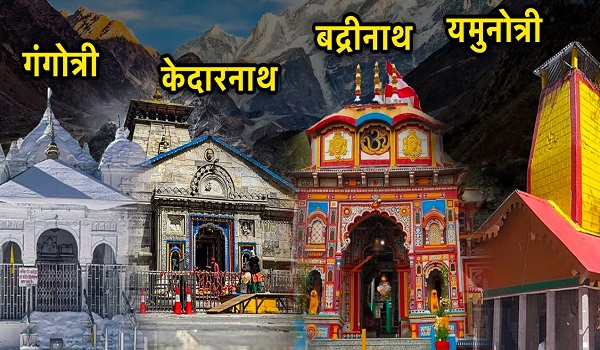
Travel Tips for Pilgrims
The Char Dham Yatra, which includes visits to Yamunotri, Gangotri, Kedarnath, and Badrinath, is a sacred journey for Hindus. To ensure a smooth and fulfilling pilgrimage, here are some essential travel tips:
- Physical Preparation: The trek to Kedarnath and Yamunotri can be physically demanding. Regular exercise, especially walking, is advisable before the trip. Ensure you are in good health, and consult your doctor if you have any pre-existing conditions.
- Packing Essentials: Pack light but carry essential items like warm clothing (weather can be unpredictable), sturdy shoes, rain gear, personal medications, and a first-aid kit. Don’t forget your ID, travel permits, and temple donation receipts.
- Altitude Acclimatization: Kedarnath and Badrinath are located at high altitudes. Take your time to acclimatize to prevent altitude sickness. Drink plenty of water and avoid overexertion.
- Travel During Season: The Char Dham Yatra is best undertaken between April and October, when the weather is relatively warmer, and the temples are open.
- Respect the Local Culture: Maintain the sanctity of the holy sites. Follow local customs and traditions, and be respectful of the priests and fellow pilgrims.
- Plan Your Travel in Advance: Book accommodations, transportation, and yatra permits ahead of time, as the region can get crowded, especially during peak season.
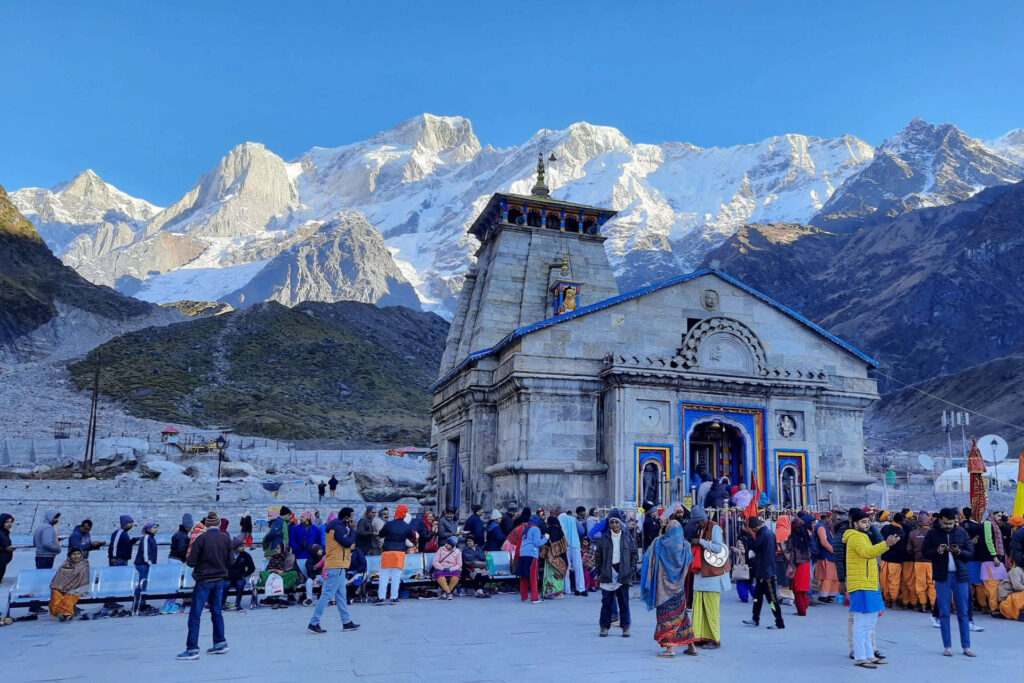
Ideal Itinerary for the 4 Dham of Uttarakhand
Day 1: Arrival in Dehradun
Your journey begins at Dehradun, the capital of Uttarakhand, which is well-connected by air, train, and road. On arrival, relax and acclimatize to the weather. If time permits, visit local attractions like the Tapkeshwar Temple or the Robber’s Cave.
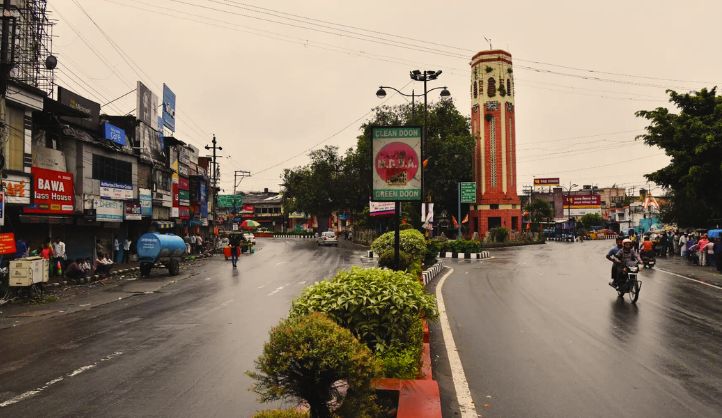
Day 2: Dehradun to Yamunotri (200 km, 6-7 hours)
After breakfast, depart for Yamunotri, the first Dham of the pilgrimage. Located at an altitude of 3,293 meters, it is dedicated to the Yamuna River. On the way, you’ll pass through scenic towns like Barkot. Once you reach the foothills, you’ll need to trek about 6 km (one way) from Janki Chatti to Yamunotri Temple. After offering prayers, return to your accommodation in Barkot or a nearby town for an overnight stay.
Day 3: Yamunotri to Uttarkashi (130 km, 5-6 hours)
After a peaceful morning, embark on a drive to Uttarkashi, a picturesque town situated on the banks of the Bhagirathi River. This is a convenient stop before heading to the next Dham, Gangotri. You can visit the Kashi Vishwanath Temple in Uttarkashi, dedicated to Lord Shiva. Enjoy the serenity of the town before resting overnight.
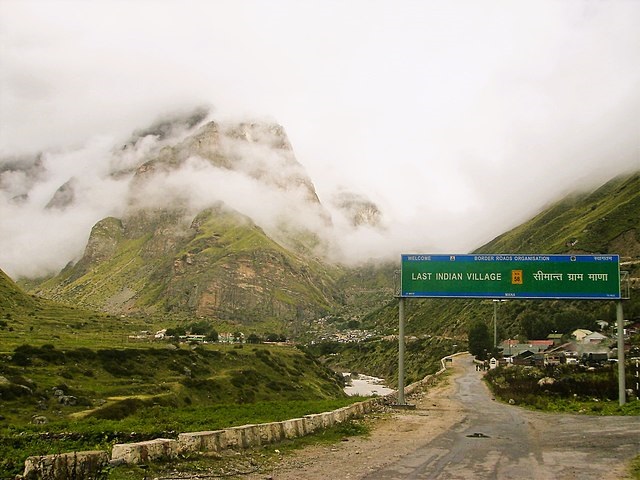
Day 4: Uttarkashi to Gangotri (100 km, 4-5 hours)
After breakfast, drive towards Gangotri, the second Dham, which is located at an altitude of 3,048 meters. The Gangotri Temple is dedicated to Goddess Ganga and is the origin of the river. Pilgrims perform rituals at the temple and can also visit the Ganges Kund, the place where the Ganges is believed to have originated. Spend the night in Gangotri or Uttarkashi, depending on your comfort.
Day 5: Gangotri to Guptkashi (210 km, 7-8 hours)
The journey continues towards Guptkashi, which serves as a base for visiting Kedarnath. En route, you’ll experience breathtaking views of the mountains. On arrival in Guptkashi, check into your accommodation and relax.

Day 6: Guptkashi to Kedarnath (30 km by helicopter or 16 km trek)
Kedarnath, the third Dham, is dedicated to Lord Shiva. To save time and energy, many pilgrims opt for a helicopter ride from Guptkashi to Kedarnath. Alternatively, you can take the 16 km trek from Gaurikund to reach the temple. After offering prayers at the Kedarnath Temple, spend some time in reflection amidst the grandeur of the Himalayan peaks. Return to Guptkashi for the night.
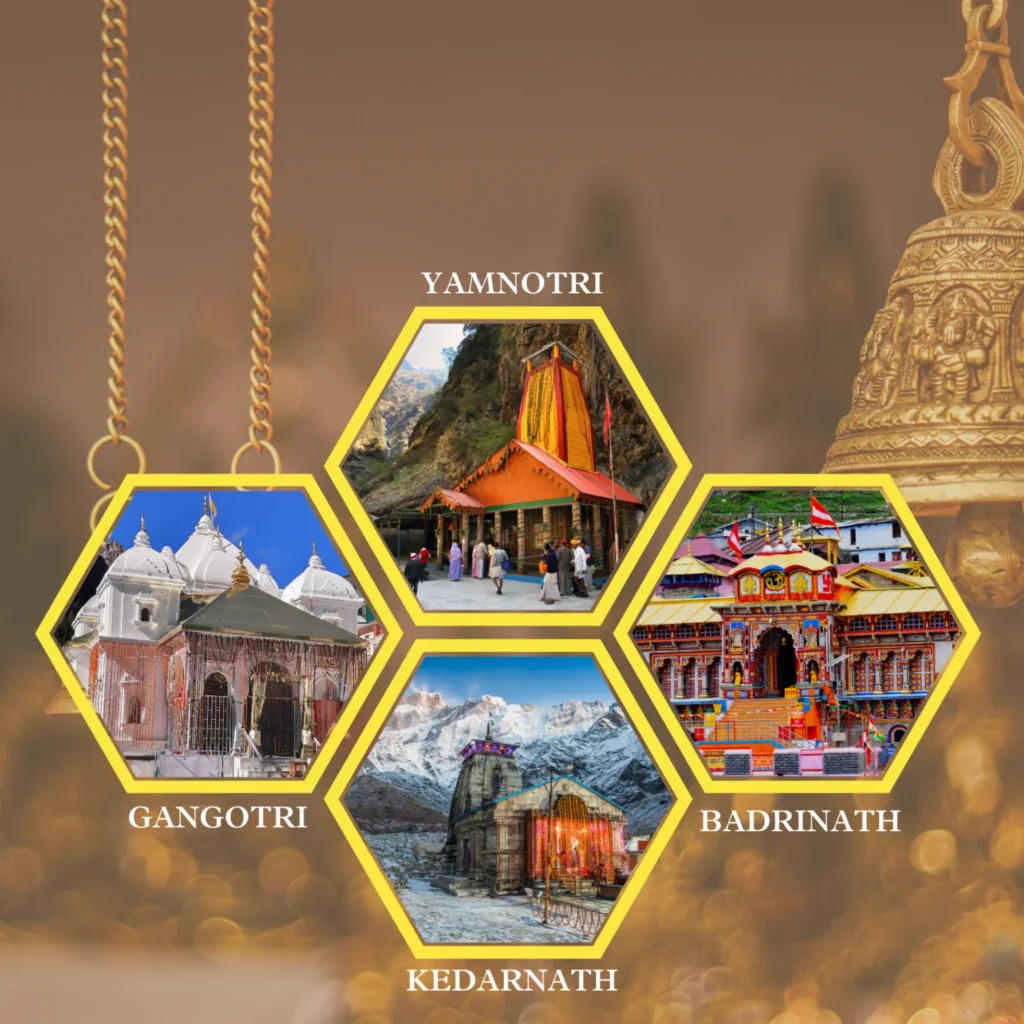
Day 7: Guptkashi to Badrinath (230 km, 9-10 hours)
After an early breakfast, drive towards Badrinath, the final Dham. This journey takes you through the scenic routes of the Mana Village and along the banks of the Alaknanda River. Upon arrival, check into your hotel and rest before heading to the Badrinath Temple, dedicated to Lord Vishnu. Pilgrims can also visit Mana Village, the last inhabited village near the Indo-Tibetan border.
Day 8: Explore Badrinath
Spend the day exploring the Badrinath Temple and nearby attractions like Tapt Kund (hot springs), Brahma Kapal, and Sheshnetra. This day can also be used for rest or to perform additional rituals at the temple.
Day 9: Badrinath to Rudraprayag (160 km, 7-8 hours)
After visiting Badrinath, head back towards Rudraprayag, a town that lies at the confluence of the Alaknanda and Mandakini Rivers. Here, you can visit Kedarnath Temple in the town and relax before heading to your next destination.
Day 10: Rudraprayag to Dehradun (150 km, 6-7 hours)
On the final day, drive back to Dehradun. Upon arrival, you can spend the evening relaxing or shopping for souvenirs before departing for your onward journey.
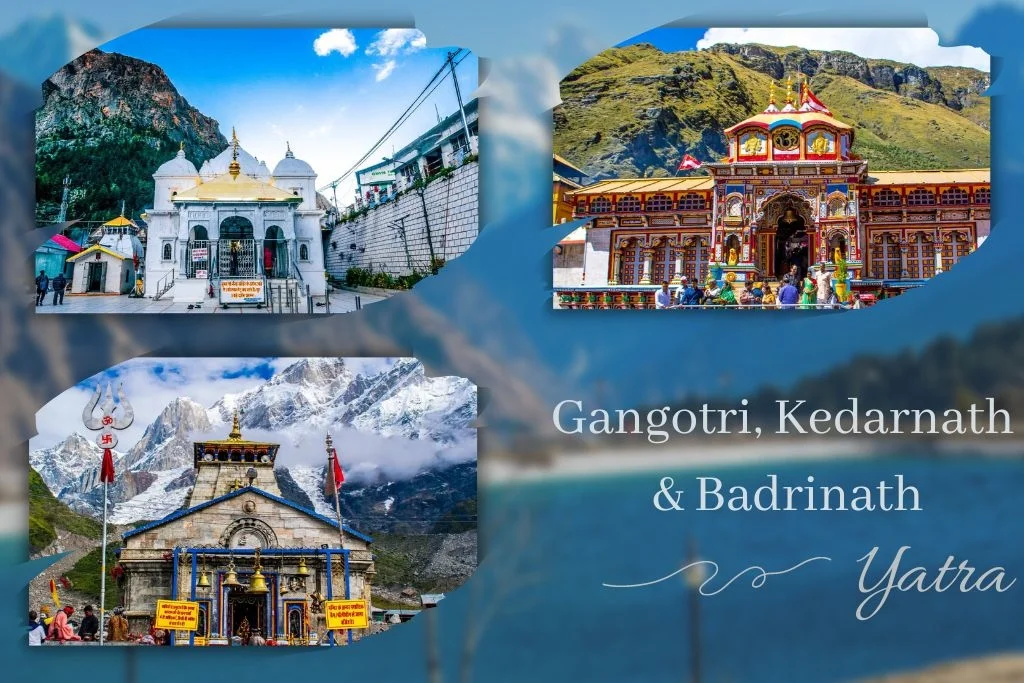
Conclusion
The 4 Dham of Uttarakhand—Yamunotri, Gangotri, Kedarnath temple, and Badrinath—offer more than just a religious experience; they represent a spiritual and adventurous journey. The trek through these holy sites, surrounded by the majestic Himalayas, is a humbling reminder of the power of faith and the beauty of nature.
This journey through the 4 Dham of Uttarakhand is sure to be a transformative experience. Embrace the spiritual energy, marvel at the Himalayas, and find peace within the sacred landscapes of Uttarakhand.








Leave a Reply